
Travel Checklist: 15 Things You Should Never Forget
Posted on January 11, 2021
Heading off on a big adventure? Then it pays to prepare properly! Mind you, that doesn’t mean stuffing your luggage with a billion items you don’t need. Being overprepared is a thing.
Still, what years of traveling taught me is that there are some essential steps worth taking before every trip.
#1 Remember the most important items
I’m sure you’ve got this covered already, but just to be sure… Always pack these things:
- Your passport (duh!)
- Your bank or credit cards
- Your driving license, if you have one
When it comes to packing, most things are actually not worrying about too much. If you mess up and forget something, you can always buy it there.
But that’s not true for the items above.
Your ability to pay for things or cross borders are paramount. Store your IDs and money securely! hey are like your travel superpowers. Whatever happens, you don’t want to lose your superpowers.
#2 Leave all the crap you don’t need
Are you pouring over tons of packing lists and obsessing over your gear? Then maybe you’re at risk of overpacking.
Many packing lists try to be the most ‘complete’ but list tons of stuff you might not really need. Some lists are aimed at road trips or wilderness trekking and not for staying in hotels or hostels.
Always try to pack as light as you can. Everything just becomes so much easier on the road when you’re not traveling like a mule. For an example of how you can pack efficiently, read my ultimate guide to packing light.
Above is an example of what I pack for a backpacking trip (summer or tropical destinations).
Consider traveling with just a carry-on backpack (around 40 liters) to force yourself to pack lighter. Huge 70-liter technical backpacks are really not necessary unless you’re going trekking or mountaineering.
#3 Get a debit card with free ATM withdrawals
ATMs abroad are evil. They often add hefty foreign transaction and currency exchange fees. And your bank at home? They get in on the action too.
It’s worth getting a travel debit card such as those by Transferwise or Revolut. These internet-based banks don’t charge ATM fees (at least, up to a certain level) and let you save a ton of money on currency conversion. I have an overview of the best travel debit cards.
These debit cards also have apps that let you monitor any withdrawals and freeze the card with one tap. This is great for travel as it lets you keep an eye on any scams or swiping, which does sadly still happen in developing countries.
Traveling in Europe? Then avoid using ATMs from a company called Euronet, which are often installed in convenience stores and such. They always charge ridiculous extra fees, even when you use a good travel debit card.
In general, always try to get money out from ATMs of commercial banks. But before you travel, it helps to get yourself a traveler-friendly debit card.
#4 Get travel insurance
Despite the added expense, I always recommend getting travel insurance when going abroad.
You might think this is mainly for things like theft or cancellation insurance, but I think those are just nice to have. The real main reasons for insurance are the travel medical and liability coverage. If you end up in an emergency abroad, these expenses can be huge.
World Nomads is a popular provider of travel insurance, offering a lot of flexibility and extensive coverage for adventure activities and sports. You can get a quote with them using the form below. I also recommend Heymondo, which offers packages for short trips, long-term trips, as well as annual multi-trip insurance. You can view a detailed comparison of travel insurance to find one that suits your needs.
#5 Get your vaccinations and malaria prophylaxis
Going to Belgium? Then congratulations, you can skip this section! You probably won’t be getting malaria in Belgium.
But if you’re going to Borneo, let’s say, then it’s a different story. For any tropical destination or developing country, you may need to get vaccinations or malaria medication. This includes a lot of countries in Southeast Asia and South America. Proof of yellow fever vaccination is also required to enter some countries, particularly in Latin America.
Ideally, you should go to your local doctor or general practitioner for this well ahead of time (like 4-6 weeks).
Don’t worry about this too much though. I often notice first-time world travellers getting scared about diseases, but the chances of catching something are low (apart from some very remote areas) and many vaccinations can keep you fully protected. Just get your jabs.
#6 Know your budget
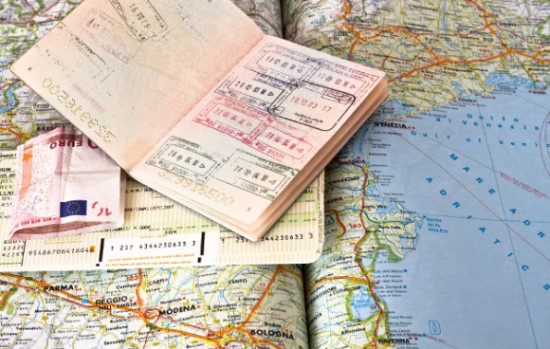
Maybe it sounds obvious, but I’ve met a few backpackers who ended up stuck in a place with no money, waiting for family to buy their return ticket, or just stuck working in a bar to make enough money to head onwards. Oops.
It’s easy to underestimate your expenses, so best to look into it while you’re still at home.
You don’t need to work out some giant Excel spreadsheet (it’s impossible to predict all your expenses anyway), but it’s a good idea to have some rough estimates. Be sure to give yourself a bit of margin for error, to account for unexpected expenses.
#7 Request any visas you need
A.k.a. “can you actually legally enter the country you’re going to?”.
Often it’s possible to get a visa-on-arrival at the destination airport, but there are plenty of exceptions. It depends hugely on the country you’re going and what nationality you have.
The easiest place to check this is VisaHQ.com. You can get a visa yourself at the appropriate embassy, or you can get VisaHQ to sort this all out for you. If you intend to work abroad at all, keep in mind this usually requires a different visa (even for temporary work), so make sure you’ve got the right one.
Don’t confuse travel visas with a Visa credit card, as some people do. These are totally different things.
#8 Set up a back-up service

OK, chances are that you’re not going to do this. And chances are, you’re going to kick yourself for this one day.
I know this is boring to do, but it is super important. I’m sick of hearing any more sob stories from travelers who lost all their photos due to theft or accident. A camera can be replaced but your photos can’t!
It’s not just theft; cameras can overheat, fall into the ocean, corrupt their memory, or you can even press the Delete All button by accident. Don’t laugh, it’s happened to someone I traveled with.
Be sure to set up a cloud storage service before you go, or figure out some other way to keep frequent backups. Your device might already have a backup service, so enable it in your settings. Or check out Dropbox, Microsoft’s One Drive, Google Drive or iCloud Drive, just to name a few.
You can also make manual backups on an extra SD card or portable hard drive.
#9 Secure your valuables
It’s a good idea to have a secret place to stash some money, credit card, or other valuables or emergency items.
Some people swear by a money pouch, though I think they can be quite bulky and distracting. Nowadays I use a small leather pocket that can clip onto a belt, where I keep some folded up bills. There are other products out there letting you hide items inside a belt or sock.
If you’re traveling for a while, get some travel debit cards, and use them as back-ups. Store them in different places so that you always have a way to get money out.
#10 Make a record of emergency details
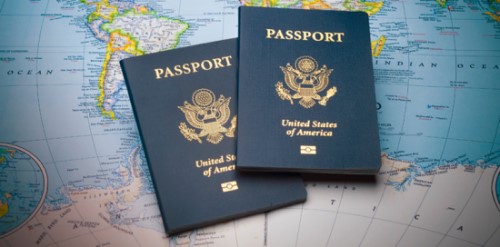
Be sure to keep your emergency details somewhere; things like emergency contacts at home, travel insurance details and your bank’s 24-hour helpline number in case of a stolen card. Write this down or email the details to yourself.
Take a good photo of your passport and e-mail it to yourself, or store it on a cloud drive. You might be asked for this by tour companies or rental agencies, so it’s always useful to have this ready.
#11 Download travel apps for your phone
There are some super useful apps that are worth having on your phone when you travel.
If you download just one, make sure it’s MAPS.me. It has fantastic maps that are much better for travel than Google Maps or Apple Maps, and you can also use them offline. Many travellers swear by it!
#12 Research the local customs and language
Check if there are any cultural quirks to be aware of in your destination, and learn some useful phrases in the local language.
This can save you a bit of embarrassment and make your trip go a lot smoother. It’s often easier to learn these things now than during your travels.
Before travelling to South America, I spent a few weeks practicing Spanish on Duolingo, which helped me enormously when having to ask for directions and such.
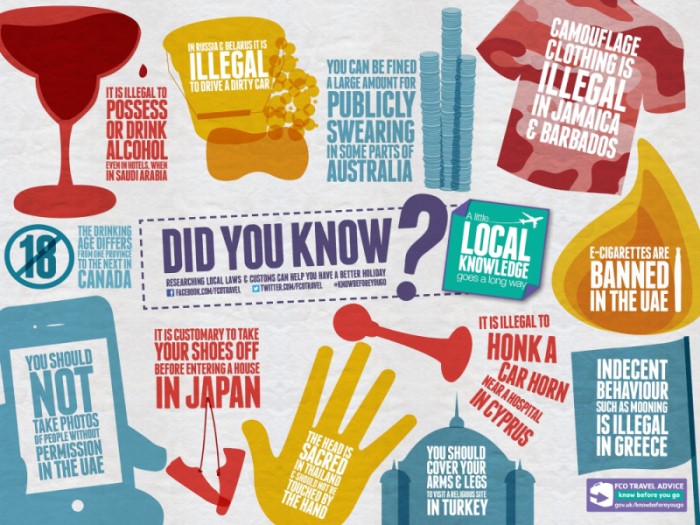
#13 Get the right plug adaptor(s)
Different countries use different types of electrical sockets.
It’s often not too difficult to pick up a cheap converter at a market or electronics shop somewhere at your destination. You could also pack a universal all-in-one plug adaptor, so that you don’t need to worry about being able to charge your electronics anywhere in the world.
Don’t keep buying individual adaptors all over the world as it’s a waste of plastic, just get one that covers it all (like the one shown below on the right).
#14 Get yourself a travel diary
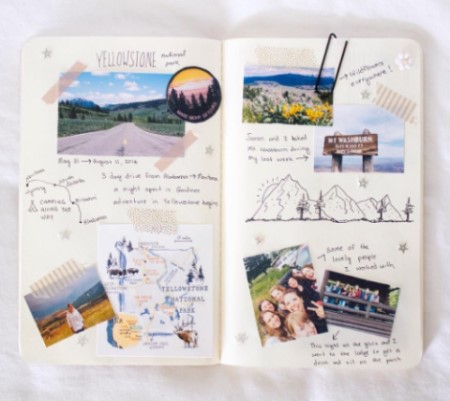
If you’re going on a longer journey, I highly recommend keeping a journal.
Even if you think it’s lame, do it anyway! I did and I’m so grateful for it.
The longer your trip the more details you are bound to forget. After a while, everything just starts to blur together. But even keeping some very simple notes can help you recall a lot of things later.
You don’t need to write deeply personal diaries or epic poetry or anything — just keep track of the things you did each day and people you’d like to remember. You can do it on your phone, but I think there’s something nice and tactile about getting a physical notebook.
#15 Prepare a travel soundtrack
You might have some long journeys ahead of you, so get some playlists ready to keep yourself entertained. Whatever music you bring on your trip will surely become deeply associated with it in your memory, so pick something good!
If you use streaming platforms like Spotify, then it might be worth downloading all your favorite tunes to your device, as you might not always have an internet connection abroad.
Dan Elson
January 25, 2021 at 6:23 pm
Really useful tips here. This is EXACTLY what I was trying to find when prepping for my 6 months backpacking trip in 2015! Cos i couldn’t find it before I wrote a smiliar post on “What is in my backpack”. Maybe your readers might be more helpful tips on the items that would be useful for backpackers too! http://iamdanelson.com/what-is-in-my-backpack/
Jon Goodson
January 19, 2021 at 10:44 pm
Great idea with the emergency details! I keep a memo in the Evernote App which has all my bank phone numbers, emergency contacts, etc. Good thing with Evernote is you can access your notes while offline. Thanks!
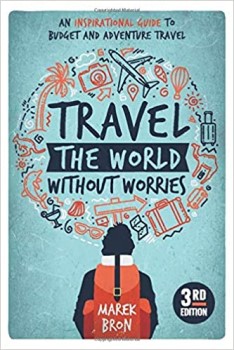
Geoffrey
February 1, 2021 at 7:49 pm
Speaking of money, it’s a good idea to have 2-3 bank cards. That way, when the ATM on the wrong side of the world eats your card, you aren’t completely out of luck. Also, carry a little cash. Nothing crazy, but 100-200 USD or EUR is enough. After all, money talks, and if the ATM isn’t working, USD and EUR are the best currencies to hold or exchange around the world. Oh, and unless you want to keep a few notes as a souvenir, spend your local currency before you leave that country. I still have a few Tunisian Dinars that no currency exchange desk wants to take off my hands!